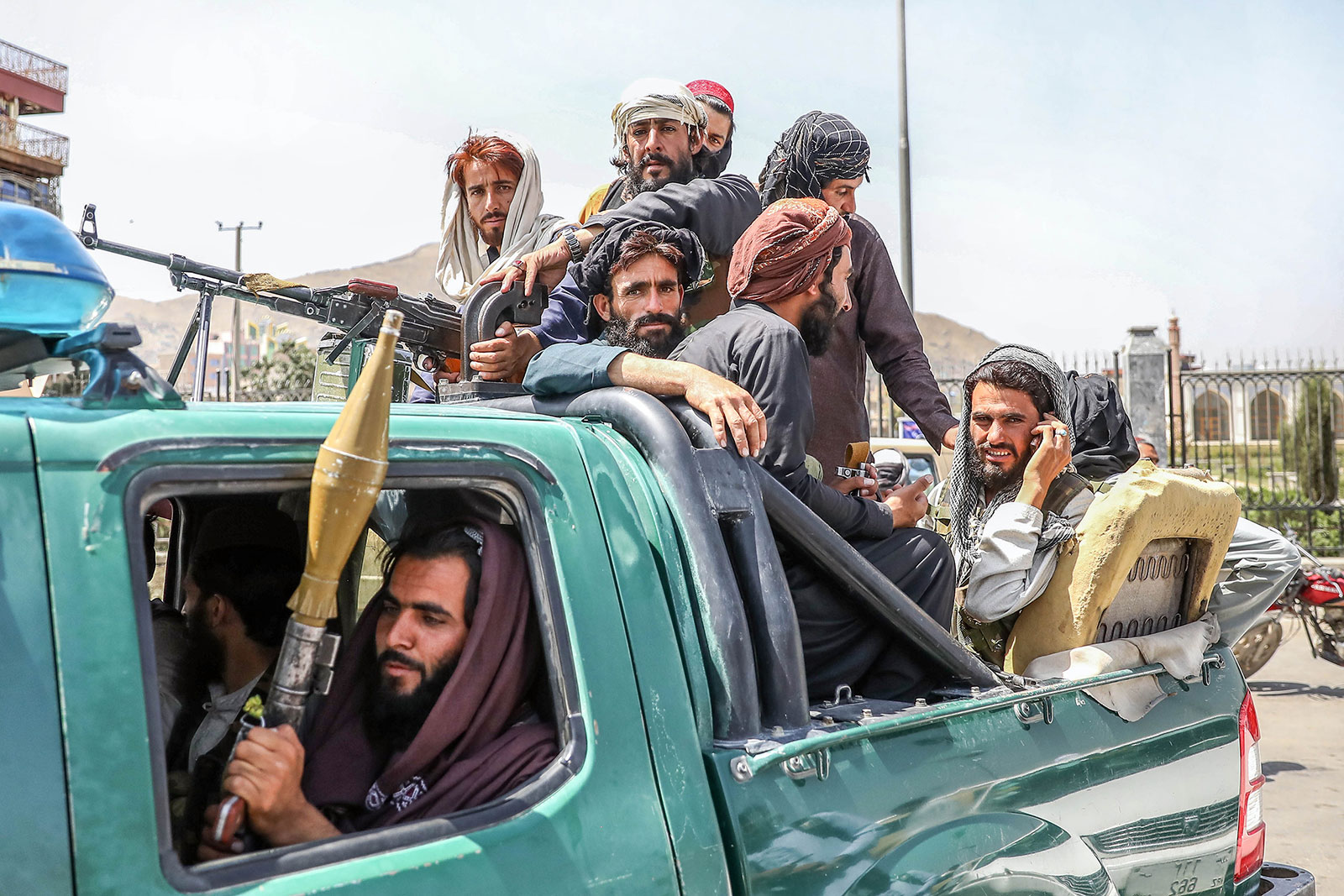A Day In The Life In Afghanistan…
NOTE: Do not ever forget that the Biden administration and the United States Pentagon decided to leave OVER $80,000,000,000 in American military equipment; vehicles, tanks, armored personnel carriers, helicopters, rockets, missiles, all manner of weaponry — and tons of ammunition and bombs.
And now it’s a surprise that terrorist groups are training, and having carte blanche in a rabid Islamist terrorist state controlled by the Taliban?
Really?
OVER $80,000,000,000 in all manner of military equipment, arms, bombs, and ammunition. Aren’t you glad your tax dollars are being wisely used and not wasted foolishly?
There is a brain trust in Washington, D.C.? In the U.S. military top brass?
Really?
Now wondering how and why this situation has arisen. I wonder why…
Read on…
Ken Pullen, Wednesday, May 15th, 2024
Terrorist groups regain strength in Afghanistan
Critics question the effectiveness of Biden’s ‘over the horizon’ surveillance strategy
May 14, 2024
By Ben Wolfgang
Reprinted from The Washington Times
The power vacuum that America left behind in Afghanistan is fueling a resurgence of Islamist terrorists who have the will, and perhaps the capability, to target the U.S. and its interests abroad, according to a major report by the United States Institute of Peace, which argues that the Biden administration should consider unleashing more military strikes against terrorist targets in the country.
The study, being made public Tuesday, is one of the most detailed looks at the threats emanating from Afghanistan in the years since President Biden ordered the U.S. military withdrawal in 2021. It cites the rising threat from ISIS-K, the Islamic State’s Afghanistan affiliate, and continued support for al Qaeda from Afghanistan’s ruling Taliban regime as two of the most immediate threats confronting America and its allies.
More controversially, the report’s authors call on the Biden administration to weigh new rounds of U.S. strikes in Afghanistan against terrorist groups targeting America, along with cyberattacks to disrupt the communications and propaganda campaigns of ISIS-K and al Qaeda.
Since leaving Afghanistan in August 2021, the U.S. military has carried out just one strike in the country despite Mr. Biden’s promise that the “over the horizon” capabilities of the military and intelligence community could keep a lid on any terrorist threats. The USIP report argues that the administration needs to overhaul its approach to meet the rising level of danger.
“The United States needs a more robust military and intelligence approach to mitigate the rising terrorism threats, in particular those that the Taliban are unwilling or unable to contain,” the study says. “This approach could prioritize lethal and nonlethal targeting of threats against the U.S. homeland and select regional interests, such as threats that could seriously destabilize Pakistan, or against major partners such as India.”
The report argues that terrorist threats are growing in neighboring Pakistan, with some groups aiming to attack the U.S. homeland and others focused on attacks on India. In a worst-case scenario, that “could trigger Indian military action against Pakistan and, in turn, risk a regional war between two nuclear-armed states,” the study says.
More broadly, the paper lays out why the conditions inside Afghanistan, and to a lesser degree Pakistan, have created an incubator for a new generation of potential extremists. Both countries have large pools of would-be terrorists with experience battling Western troops over the past two decades or some level of military training, or both.
“Terrorist groups in Afghanistan and Pakistan are persistent, and some are gaining strength in ways that threaten U.S. and allied interests as well as regional security,” the report says. “The post-U.S. withdrawal environment in Afghanistan offers terrorist groups a range of new opportunities for regrouping, plotting and collaborating with one another.
“These groups are positioned to tap into the vast pool of trained militant personnel in Afghanistan and to some extent in Pakistan,” the report says. “The groups also benefit from the reduced U.S. monitoring and targeting capabilities in the two countries.”
In addition to al Qaeda and ISIS-K, the study identifies the Tehreek-e-Taliban Pakistan, the Pakistani Taliban more commonly known as TTP, as a group that has “returned as a regional security threat” in the years since the U.S. exit from Afghanistan.
The USIP is releasing its study just months after a United Nations report found that al Qaeda is operating training camps and safe houses in Taliban-controlled Afghanistan, though it said the group that carried out the Sept. 11, 2001, terrorist strikes is now not capable of conducting external attacks.
ISIS-K, however, is capable of such operations. This year, the group carried out a massacre at a concert hall in Moscow and an assault at an Iranian funeral. Pentagon officials have warned that the group aims to strike U.S. interests as well.
The Taliban see ISIS-K as a mortal enemy and, like the U.S., Iran and Russia, want to destroy the organization or at least greatly limit its ability to carry out attacks in Afghanistan and beyond. On the surface, that would seem to provide an opportunity for some level of U.S.-Taliban cooperation in the fight against ISIS-K, but the USIP report says Washington can’t bank on the Taliban’s help.
“When it comes to the United States, the Taliban seem interested in minimal information exchanges and providing unverifi able assurances, away from the public view, of restraining militants — but that may not be sufficient to assuredly deter al Qaeda and disrupt ISIS-K to a level necessary for degrading external plotting capability over the long term,” the study says.
Pentagon officials insist that, just as the president promised in August 2021, over-the-horizon strikes are a viable option in some circumstances. They note that U.S. forces in July 2022 carried out a drone strike that killed al Qaeda leader Ayman al-Zawahri in Kabul, a major victory in the American fight against Islamic terrorist groups.
Analysts say such one-off strikes are possible but sustained anti-terrorist campaigns in Afghanistan, across Central Asia and even parts of Africa have become exceedingly difficult, if not impossible, given the limits of the over-the-horizon approach.
In Afghanistan, “terrorists enjoy the same open-field running they did before 9/11. And there’s no such thing as over the horizon. … We don’t have the capability to kill those guys, let alone find and fix their locations,” retired CIA Clandestine Services officer Daniel N. Hoffman recently told The Washington Times’ “Threat Status Podcast.”
“There’s no such thing as ‘over the horizon.’ You can’t see it. That’s an awful, very intellectually dishonest way to describe our strategy,” he said. “The [ISISK] attack in Moscow ought to be a wake-up call for Europe and the United States that they’re coming after us.”
The USIP report urges the U.S. to immediately ramp up counterterrorism efforts across Afghanistan.
Specific steps that the study urges American policymakers to consider include: targeting with lethal action in Afghanistan groups that are involved in plots against the U.S. homeland and interests; employing shows of force through drones against Taliban leaders and personnel assisting terrorist groups such as al Qaeda; offering counterterrorism assistance to Pakistan, but also communicating to Pakistani leaders that if terrorists based in or backed by Pakistan carry out attacks in India, there would be serious negative repercussions for bilateral ties; and to prepare “contingency plans for handling terrorist attacks in the homeland and overseas against major allies and partners such as India.”








Leave a Reply, please --- thank you.